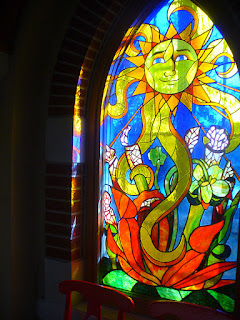We all know people who are good storytellers, who can make the mundane seem extraordinary. You know that person who can write about something with such imagination and passion that you'd believe that the thing that they just did was the most interesting thing in the world? You might even wish you were with them. Until you remember that you were with them and it was really boring. I'd like to call this the Facebook Effect, as this seems to be the case with a lot of the content on Facebook, but I feel I've been harsh to Facebook as it tends to unfairly represent all social media. Many sites refer to this "everyone is having more fun than me" sensation as the "fear of missing out."
This is the opposite of that. This is when you experience and learn so much that you don't even know where to begin. You have so much to say that words fail you. In time, I'll be able to sieve my experiences and write about them, but right now, I am overloaded with Civil War bliss and can't think of anything to write. Normally when this happens, I just post photos.
I finally got to do some of the historical stuff I have been wanting to do. I visit a lot of historical sites during the summer, but most of the time, it is while reenacting. Reenacting is fun, but sometimes I really just want to see the historic sites and learn about the history. There is something very special about standing on the ground where something momentous took place.
Yesterday and today, Andy and I did the full tour of Gettysburg. It is always raining when we go and we have never been able to visit all of the things we'd like to see. We normally do the "quick and dirty" tour and leave. Yes, it was raining today, but we decided we'd do it anyway. :D Gettysburg is normally a lot of fun, but we very much enjoyed getting to see much more than we normally do.
P.S. Just so this post doesn't unfairly represent our experiences, I leave the following disclaimer:

















